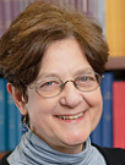An absolute risk model to identify individuals at elevated risk for pancreatic cancer in the general population Journal Article
| Authors: | Klein, A. P.; Lindstrom, S.; Mendelsohn, J. B.; Steplowski, E.; Arslan, A. A.; Bueno-de-Mesquita, H. B.; Fuchs, C. S.; Gallinger, S.; Gross, M.; Helzlsouer, K.; Holly, E. A.; Jacobs, E. J.; LaCroix, A.; Li, D.; Mandelson, M. T.; Olson, S. H.; Petersen, G. M.; Risch, H. A.; Stolzenberg-Solomon, R. Z.; Zheng, W.; Amundadottir, L.; Albanes, D.; Allen, N. E.; Bamlet, W. R.; Boutron-Ruault, M. C.; Buring, J. E.; Bracci, P. M.; Canzian, F.; Clipp, S.; Cotterchio, M.; Duell, E. J.; Elena, J.; Gaziano, J. M.; Giovannucci, E. L.; Goggins, M.; Hallmans, G.; Hassan, M.; Hutchinson, A.; Hunter, D. J.; Kooperberg, C.; Kurtz, R. C.; Liu, S.; Overvad, K.; Palli, D.; Patel, A. V.; Rabe, K. G.; Shu, X. O.; Slimani, N.; Tobias, G. S.; Trichopoulos, D.; Van Den Eeden, S. K.; Vineis, P.; Virtamo, J.; Wactawski-Wende, J.; Wolpin, B. M.; Yu, H.; Yu, K.; Zeleniuch-Jacquotte, A.; Chanock, S. J.; Hoover, R. N.; Hartge, P.; Kraft, P. |
| Article Title: | An absolute risk model to identify individuals at elevated risk for pancreatic cancer in the general population |
| Abstract: | Purpose:We developed an absolute risk model to identify individuals in the general population at elevated risk of pancreatic cancer.Patients and Methods:Using data on 3,349 cases and 3,654 controls from the PanScan Consortium, we developed a relative risk model for men and women of European ancestry based on non-genetic and genetic risk factors for pancreatic cancer. We estimated absolute risks based on these relative risks and population incidence rates.Results:Our risk model included current smoking (multivariable adjusted odds ratio (OR) and 95% confidence interval: 2.20 [1.84-2.62]), heavy alcohol use (>3 drinks/day) (OR: 1.45 [1.19-1.76]), obesity (body mass index >30 kg/m2) (OR: 1.26 [1.09-1.45]), diabetes >3 years (nested case-control OR: 1.57 [1.13-2.18], case-control OR: 1.80 [1.40-2.32]), family history of pancreatic cancer (OR: 1.60 [1.20-2.12]), non-O ABO genotype (AO vs. OO genotype) (OR: 1.23 [1.10-1.37]) to (BB vs. OO genotype) (OR 1.58 [0.97-2.59]), rs3790844(chr1q32.1) (OR: 1.29 [1.19-1.40]), rs401681(5p15.33) (OR: 1.18 [1.10-1.26]) and rs9543325(13q22.1) (OR: 1.27 [1.18-1.36]). The areas under the ROC curve for risk models including only non-genetic factors, only genetic factors, and both non-genetic and genetic factors were 58%, 57% and 61%, respectively. We estimate that fewer than 3/1,000 U.S. non-Hispanic whites have more than a 5% predicted lifetime absolute risk.Conclusion:Although absolute risk modeling using established risk factors may help to identify a group of individuals at higher than average risk of pancreatic cancer, the immediate clinical utility of our model is limited. However, a risk model can increase awareness of the various risk factors for pancreatic cancer, including modifiable behaviors. |
| Journal Title: | PLoS ONE |
| Volume: | 8 |
| Issue: | 9 |
| ISSN: | 1932-6203 |
| Publisher: | Public Library of Science |
| Date Published: | 2013-09-13 |
| Start Page: | e72311 |
| Language: | English |
| DOI: | 10.1371/journal.pone.0072311 |
| PROVIDER: | scopus |
| PMCID: | PMC3772857 |
| PUBMED: | 24058443 |
| DOI/URL: | |
| Notes: | --- - "Export Date: 1 October 2013" - "CODEN: POLNC" - "Source: Scopus" |
Altmetric
Citation Impact
BMJ Impact Analytics
Related MSK Work





